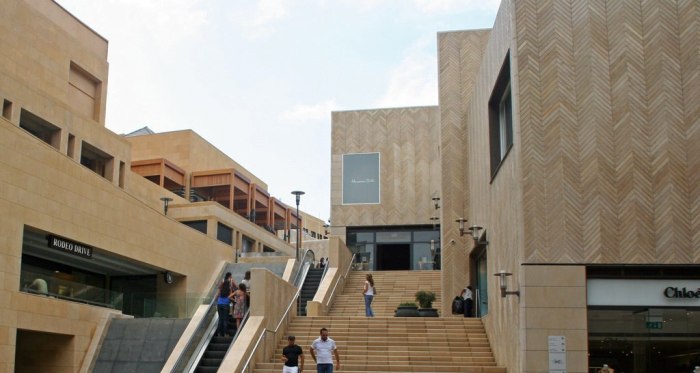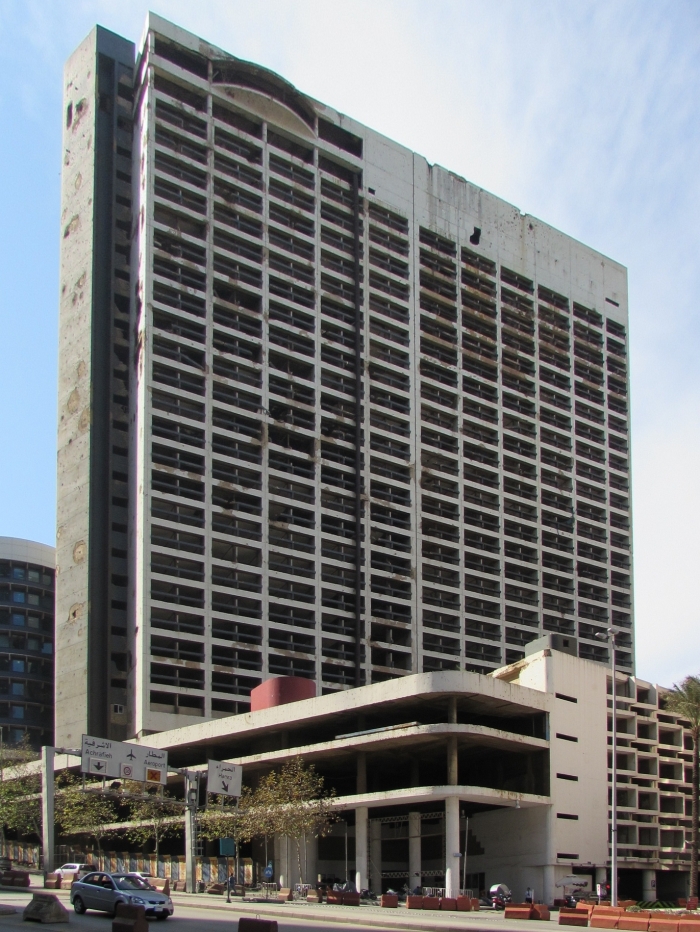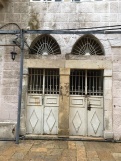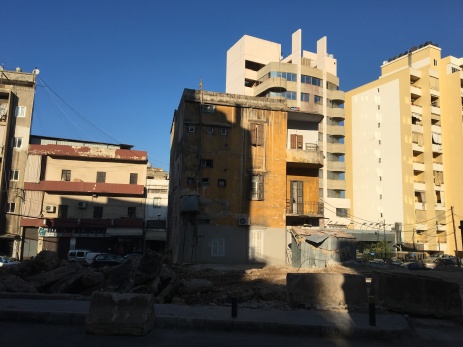Note: I wrote this post in early 2020–as a revolution was unfolding in Lebanon–as a way of keeping record of thoughts and photos from the time I’ve gotten to spend in Beirut particularly in the last five years. Then I sat on my hands not knowing whether I should be another white person with super unique reflections about the Middle East (somewhat endearing because probably a total of five people will read this post), then the pandemic started and everything feels irrelevant and pointless anyway, so here we are. It’s hard to see how the economic crisis that was already engulfing Lebanon is going to do anything other than deepen catastrophically with Covid-19. Still, I hold out hope that in Lebanon as with everywhere else, the pandemic will allow us to lay a foundation for a different kind of world.
****
When I found myself with some spare time on my own in Beirut in 2013–the first time I visited as an adult–I grabbed one of those old-timey paper maps and set off walking. Starting in Hamra, I was aiming for the spot on the map labeled ‘Beirut souks’. I imagined–in what can only be described as a flight of orientalist fancy–that this must be the traditional souk (marketplace) that can be found across Middle East cities from Palestine to Morocco, where residents of all kinds gather to buy anything from vegetables, sweets and soap to clothing and leather goods, in a colorful cacophony of sights and smells and [insert remainder of Orientalist fantasy here].
When I arrived at ‘Beirut Souks’ I was incredibly confused to find what appeared to be a high-end shopping mall boasting fashion boutiques from Prada to Tommy Hilfiger. I realized I had forgotten the tiny detail that most of downtown Beirut was obliterated during the civil war of 1975-1990, and the original souk was at the heart of that obliteration. After the war, the destruction of the downtown area was used as a pretext to implement a very particular regeneration plan under the tutelage of Solidere, the company of then-prime minister Rafic Harriri. Rather than rebuilding the souk as it had been before, most of the previous residential and commercial tenants were pushed out to make way for global brands and wealthier tenants, ensuring the downtown area became one geared mainly toward the wealthiest residents and visitors.

Beirut ‘Souks’ (photo from Wikimedia Commons)
I’ve since had the privilege of visiting Beirut yearly over the past five years. I’ve come to understand that downtown Beirut exemplifies conflicts over ownership and the failure of particular urban dreams that are visible across the city. While the downtown area may have once felt like a glitzy regeneration scheme, much of it now also feels like a ghost town, with numerous abandoned storefronts. Part of this is due to enforced security and road closures because of the nearby Lebanese parliament, but it must also surely reflect the failure of such an urban model to actually respond to residents’ needs.
Downtown ghost town
Across the city, power struggles are visible in the contrast between modern new-build projects and the staying power of older, often deteriorating buildings. Beirut retains a large number of beautiful (imho) old buildings exhibiting various architectural styles, sometimes many at the same time, such as traditional Lebanese architecture along with French art deco. Many of these structures are deteriorating and/or completely abandoned. Some were abandoned during the war and the owners never returned; because of Lebanese inheritance law and a lack of an eminent domain policy (if I’ve understood correctly), if the owner is not identified then the building cannot be touched. Some buildings have arguably deteriorated due to the old rental laws, which froze old rental contracts after the civil war. These helped to safeguard social diversity in historic neighborhoods, but in the absence of the state ensuring affordable housing options, the crumbling buildings are now luxury development opportunities waiting to happen.
A mixture of many architectural styles
At the same time, shiny new high-rises and luxury developments are springing up everywhere. The speculative nature of urban development is obvious: loose capital floods in, apparently a large portion from the gulf countries, leading to luxury apartment developments, which often then sit there empty, as the point was never to house people but to park money. Such buildings would perhaps not seem so egregious if it weren’t for the fact that most of the city’s poorer residents–including hundreds of thousands of Syrian refugees–have been relegated to overcrowded and unsafe housing, refugee camps or homelessness.
High-rises and new architecture contrast with old and sometimes crumbling buildings
In other parts of the city, disputes over ownership have stopped any redevelopment plans in their tracks for years. The most obvious example is perhaps the old Holiday Inn, open for a year before it was ransacked in the civil war and taken over by various militia groups (today, the Lebanese army has a base there). While many residents and developers alike want to see it demolished, it remains standing so many years later, pockmarked by bullet holes and explosions. The only thing competing interests could agree on was to take down the Holiday Inn sign, to appease the anxious hotel chain.

The old Holiday Inn (photo by Gregor Rom)
Elsewhere, in a quiet corner of Mar Mikhael, an increasingly trendy and gentrifying neighborhood historically important to Beirut’s Armenian community, I saw the old Laziza brewery being bulldozed in late 2017. A huge pit was carved out to make way for yet another block of luxury apartments. But in the middle of the whole thing there lingered an old yellowed building, apparently unable to be torn down because the owners have not been found. I don’t know how the new development went forward, if it did go forward, whether developers demolished the building anyway, or simply built around the structure leaving an old building of traditional architecture to spoil the planned modernist landscape. (Beirut residents might know what became of this stubborn outlier.)
The old Laziza brewery, and the surrounding block which was demolished except for a stubborn yellow building.
This is my first new year in five years not spent in Beirut and I’m in no position to properly comment on the incredible revolution unfolding in Lebanon, that began in October 2019. Suffice to say I was not expecting it, considering that there always seemed to be so much apathy towards politics in Lebanon–understandable considering the decades of corruption that have meant that seemingly simple things like continuous electricity and reliable trash collection have never been guaranteed.
But now the streets are being taken over with protests and occupations (and in classic Beirut tradition, epic dance parties) demanding an end to corruption and a more democratic political system. The movement has been reclaiming the city’s privatized spaces. A different dream is emerging. In this moment, it seems possible that maybe Beirut’s glitzy exclusive buildings and enclosed spaces are not a harbinger of the future but will become, like the crumbling Holiday Inn, a relic of the past.
For further exploration:
Ronnie Chatah’s walking tour is one of the best things I’ve done in Beirut and is where I learned many of the things in this post. Hopefully the tours will be up and running again soon: https://www.bebeirut.org/walk.html
Citylab: Beirut’s Protest City is a Rebuke to the Privatization of Public Space: https://www.citylab.com/equity/2019/10/lebanon-anti-government-protests-beirut-martyrs-square/601180/
Article about the flattened Laziza brewery and planned luxury apartment project: https://foreignpolicy.com/2017/07/24/farewell-lebanon-s-first-brewery-beer-beirut/
Gregory Buchakjian is a Lebanese artist who photographs and documents abandoned buildings in Beirut, whose work has been exhibited at the Sursock Museum and elsewhere : http://www.buchakjian.net/installation/abandoned-dwellings-inventory/index.html
Aljazeera documentary on the Holiday Inn and Lebanon’s civil war: https://www.youtube.com/watch?v=4DTGFcjRrQ4&t=635s
Recent Vice video about Lebanon’s economic crisis: https://www.youtube.com/watch?v=YHiuyUiUAp8




















